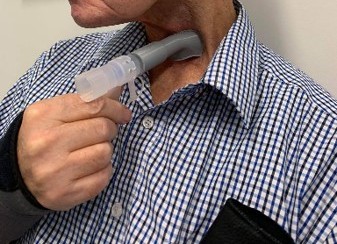3D printing for respiratory physiotherapy: a tale of three disciplines
Authors: Laura Daly, Julian de Looze, David Forrestal, Michael Wagels, Ann-Louise Spurgin, Juliet Hoey, Michael Holt, Sarju Vasani, Mathilde Desselle.
Annals of 3D Printed Medicine (2023)
Abstract
A 78-year-old patient with a laryngectomy and a background of bronchiectasis experienced frequent hospital admissions due to pulmonary exacerbations. Standard care would be to trial a positive expiratory pressure (PEP) device to assist with secretion removal, however, no adaptor could be found to contour the patient’s tracheostoma. A 3D printed patient-specific PEP adaptor was created, facilitating regular secretion clearance via PEP therapy. Frequency of hospital admissions and outcomes of disease-specific questionnaires (St. George’s Respiratory Questionnaire (SGRQ) and Leicester Cough Questionnaire (LCQ)) were evaluated at three and six months.

